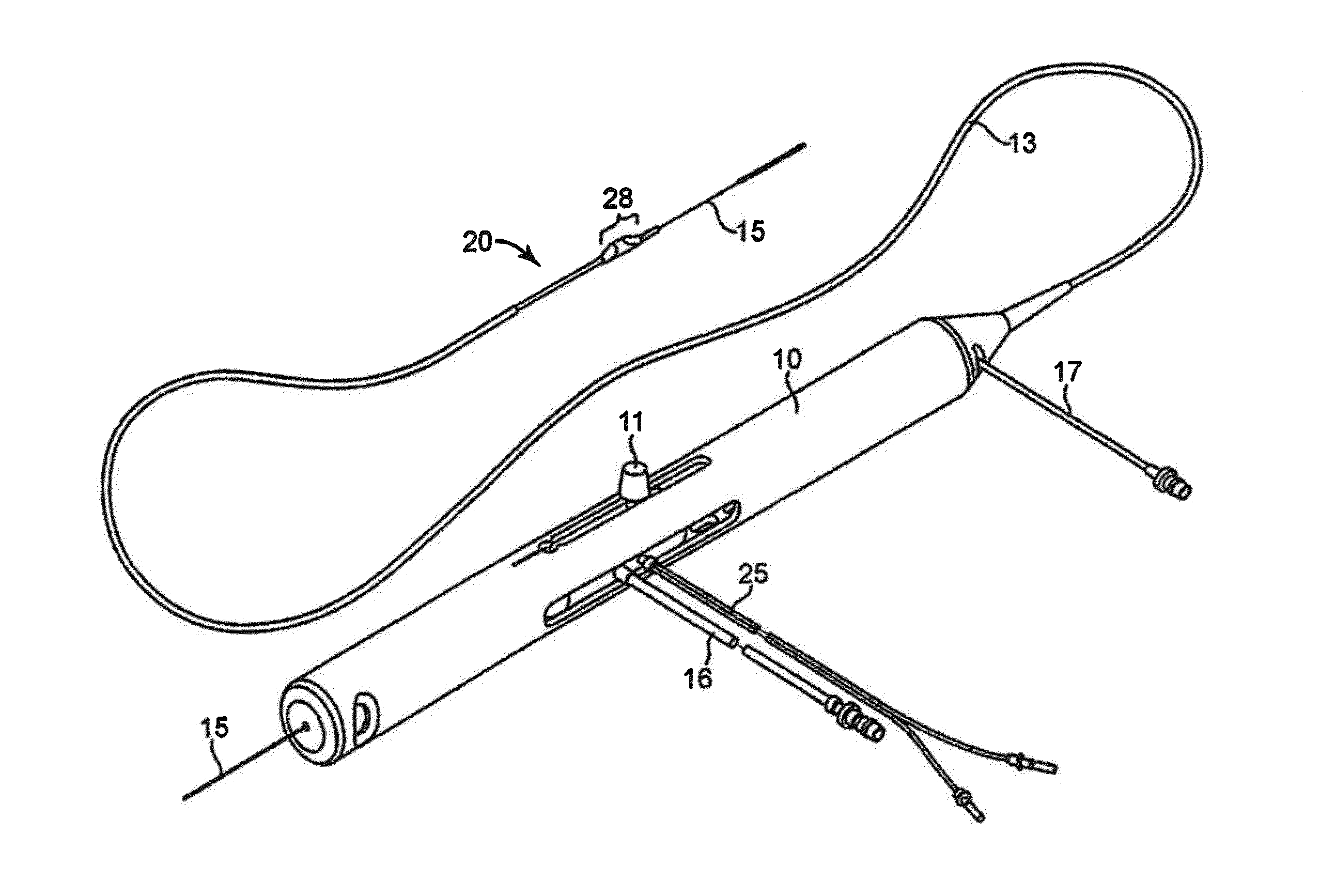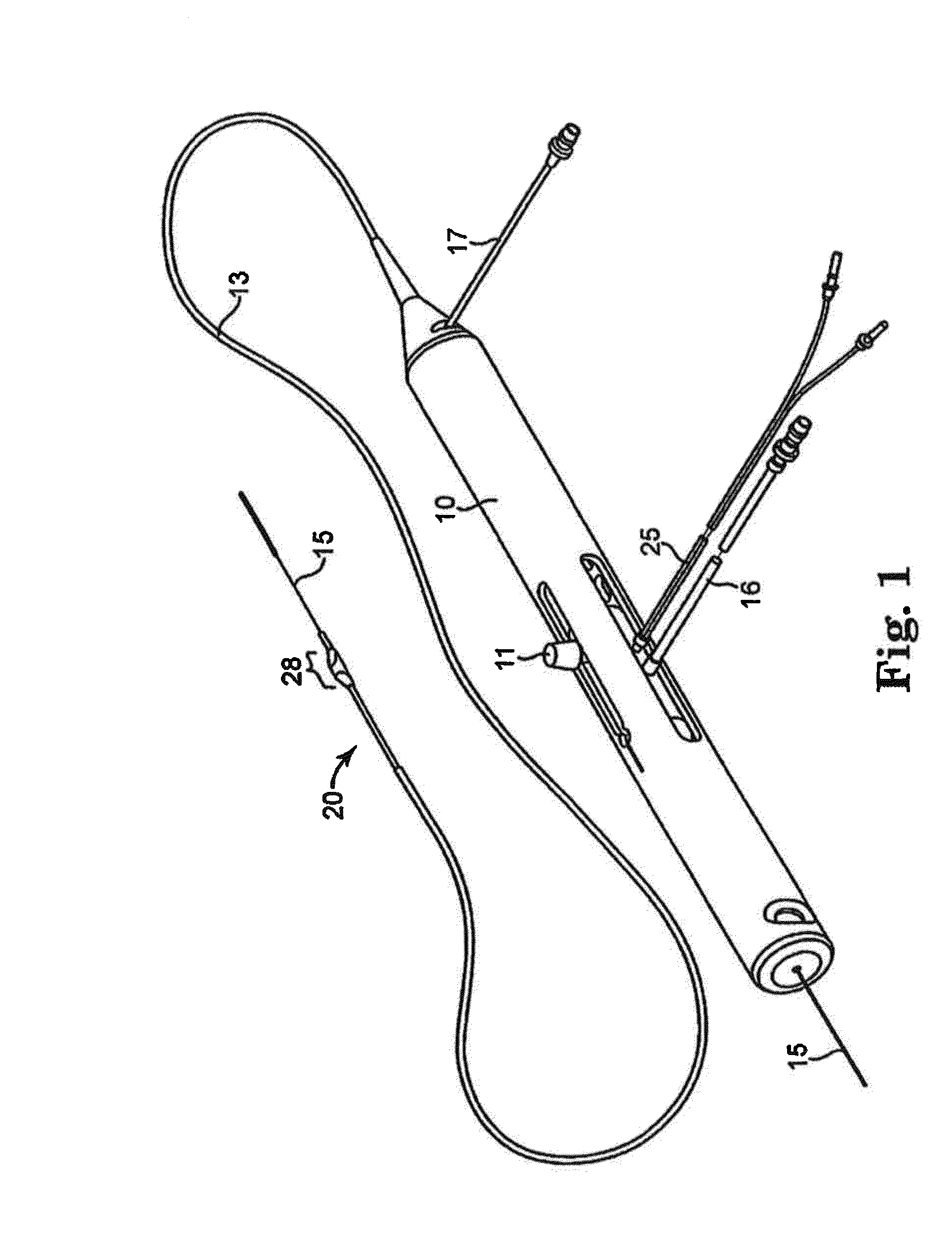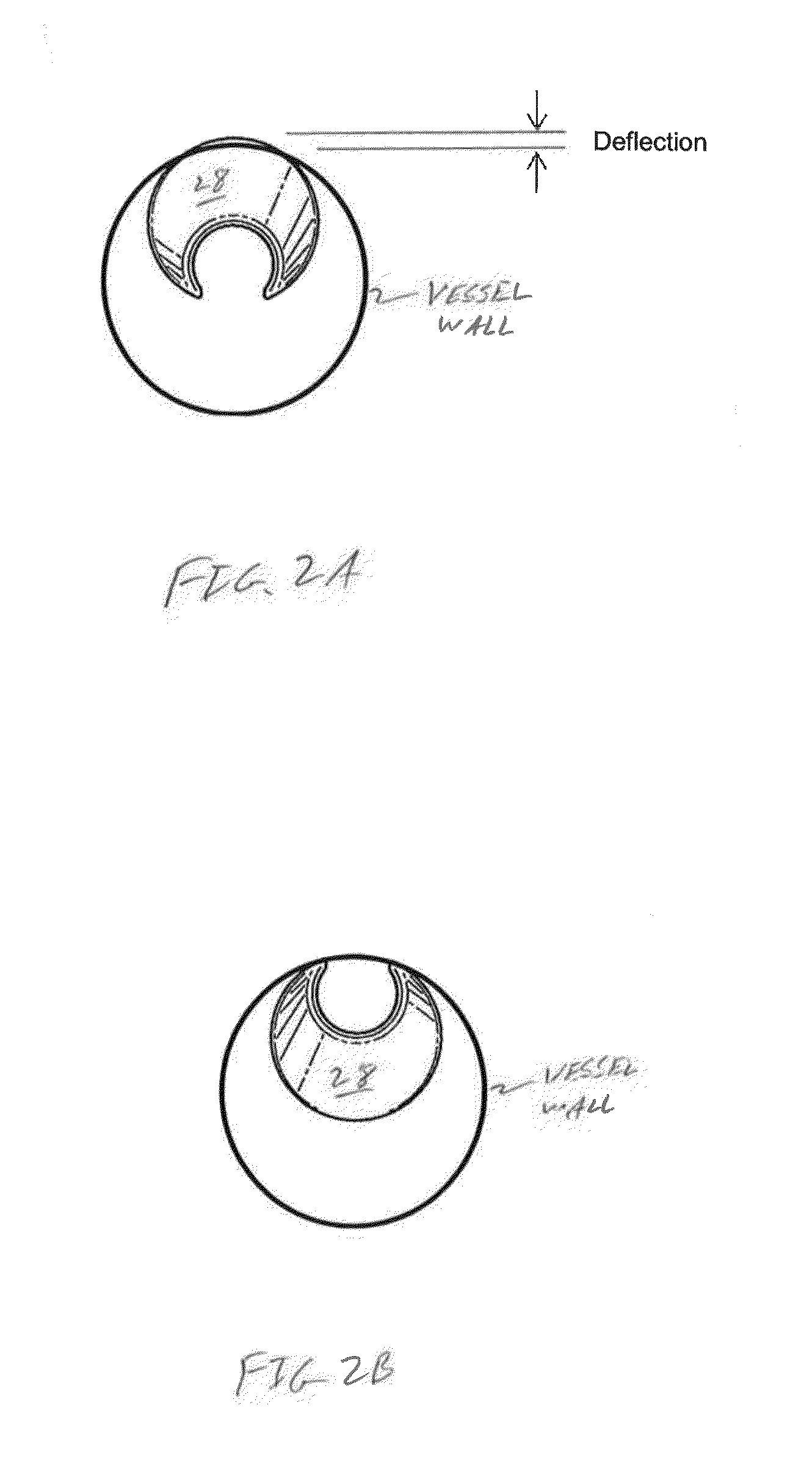Methods and systems for disrupting calcified walls of biological conduits and calcified lesions therein
a biological conduit and calcification technology, applied in the field of methods and systems for disrupting the calcification walls of biological conduits and calcified lesions therein, can solve the problems of systematic disruption of any calcification within the intimal and/or medial layers of the subject artery, softening of calcification within the occlusion or lesion, and improving compliance of the vessel, as well as the lesion itself.
- Summary
- Abstract
- Description
- Claims
- Application Information
AI Technical Summary
Benefits of technology
Problems solved by technology
Method used
Image
Examples
working example 1
[0048]The following working example investigates the motion and contact forces of an eccentric abrading during high-speed orbital atherectomy. A high-speed camera and image processing technique were utilized to visualize and quantify the crown motion and its interaction with the wall of a transparent arterial phantom made of tissue-mimicking polyvinyl chloride (PVC). Forces were measured simultaneously by a piezoelectric force dynamometer with sufficient sensitivity and bandwidth for such rapid dynamic measurements.
[0049]Materials and Methods
[0050]The experimental setup consisted of three modules—the atherectomy device, an arterial phantom, and the measurement system—in the following sections.
[0051]Atherectomy Device
[0052]The orbital atherectomy device in Working Example 1 is the Diamondback 360® manufactured by Cardiovascular Systems Inc. (St. Paul, Minn.), assignee of the present disclosure and is similar to the device illustrated in FIG. 1. This device consists of three units: (1...
PUM
 Login to View More
Login to View More Abstract
Description
Claims
Application Information
 Login to View More
Login to View More - R&D
- Intellectual Property
- Life Sciences
- Materials
- Tech Scout
- Unparalleled Data Quality
- Higher Quality Content
- 60% Fewer Hallucinations
Browse by: Latest US Patents, China's latest patents, Technical Efficacy Thesaurus, Application Domain, Technology Topic, Popular Technical Reports.
© 2025 PatSnap. All rights reserved.Legal|Privacy policy|Modern Slavery Act Transparency Statement|Sitemap|About US| Contact US: help@patsnap.com



